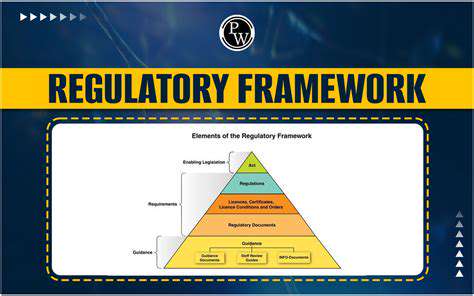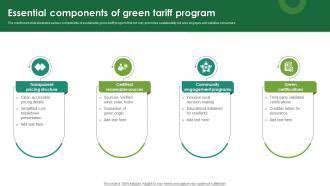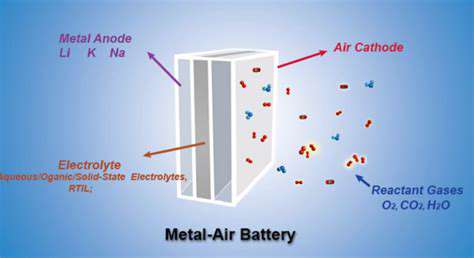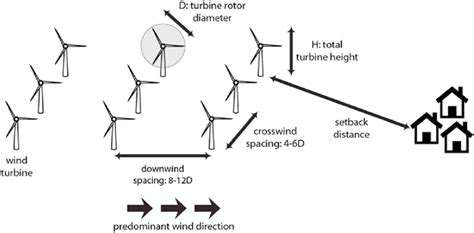Flow Batteries: The Future of Long Duration Storage?
Introduction to Flow Batteries
Understanding Flow Batteries
Flow batteries, a unique type of electrochemical energy storage system, differ significantly from traditional battery technologies like lithium-ion. Instead of storing energy chemically within the battery's physical structure, flow batteries store energy in separate electrolyte solutions that are pumped into and out of electrochemical cells. This distinct architecture allows for much higher energy density compared to other storage solutions, offering a potential breakthrough in addressing the challenges of long-duration energy storage. This fundamental difference in design translates into a variety of advantages and disadvantages, requiring a more nuanced understanding of their capabilities and limitations.
Key Advantages of Flow Batteries
One significant advantage of flow batteries is their scalability. Their modular design allows for easy expansion of energy storage capacity simply by increasing the size of the electrolyte tanks. This contrasts sharply with traditional batteries, where increasing capacity often involves more complex and costly procedures. Furthermore, the separation of the electrochemical reactions from the physical battery structure enhances safety, as the electrolyte solutions can be carefully managed and controlled, minimizing the risk of thermal runaway and other dangerous events. This safety aspect is particularly crucial for large-scale energy storage applications.
Types of Flow Batteries
Different flow battery chemistries exist, each with its unique properties and performance characteristics. Vanadium redox flow batteries (VRFBs) are a prominent example, utilizing vanadium ions in different oxidation states to facilitate the energy storage process. Other types include zinc-bromine flow batteries (ZFBs), which offer high energy density but face challenges in terms of electrolyte management. The choice of chemistry often depends on specific application requirements, considering factors like cost, performance, and safety considerations.
Challenges and Limitations
Despite their promising potential, flow batteries are not without their challenges. One significant hurdle is the relatively slow charging and discharging rates compared to lithium-ion batteries. This slower response time can be a drawback in applications requiring rapid energy delivery. Additionally, the electrolyte solutions, while generally safe, require careful handling and management to prevent leakage and contamination. The higher initial investment cost is also a concern, as the specialized infrastructure and materials required for flow batteries can be more expensive than traditional battery technologies.
Applications and Future Prospects
The applications of flow batteries are diverse and extend beyond stationary energy storage. Their unique characteristics make them suitable for grid-scale energy storage, enabling the integration of renewable energy sources like solar and wind. Furthermore, flow batteries are being explored for electric vehicle applications, offering a potential alternative to lithium-ion batteries for long-duration driving ranges. As research and development continue, flow batteries could play a crucial role in shaping the future of energy storage, particularly in sectors demanding high energy density and long-duration storage capabilities. This is an area of intense focus and development, driving innovation in the quest for sustainable energy solutions.
Types of Flow Batteries and Their Applications
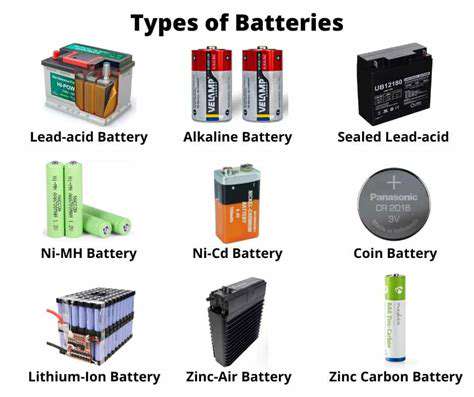
Lead-Acid Flow Batteries
Lead-acid flow batteries, a venerable technology, utilize lead dioxide and lead sulfate as the active materials. These systems offer a mature design, making them relatively inexpensive to manufacture. They are well-suited for applications requiring high energy storage capacity, like grid stabilization and large-scale energy storage solutions. Their relatively low cost and established infrastructure make them an attractive option for certain deployments. However, their energy density is lower compared to other flow battery types, and their lifespan may be shorter.
The chemical reactions involved in lead-acid flow batteries are relatively straightforward, leading to a lower overall complexity in the system design. This simplicity translates to a potential for lower maintenance and easier operation, which is a significant benefit in many industrial settings. However, the need for periodic electrolyte replacement can be a factor.
Vanadium Flow Batteries
Vanadium redox flow batteries (VRFBs) stand out for their high energy density and efficiency. These batteries leverage vanadium ions in different oxidation states as active materials, providing stable and reliable performance. Their long lifespan, often exceeding 10 years, makes them a promising solution for grid-scale energy storage applications. This long lifespan translates to significant cost savings in the long run, compared to other systems with shorter lifespans.
VRFBs are known for their high efficiency in energy conversion and their ability to maintain consistent performance over time. This characteristic is critical for applications that demand reliable and consistent power output throughout their operational period. The use of vanadium, a readily available element, further contributes to the overall cost-effectiveness of this technology.
Zinc-Bromine Flow Batteries
Zinc-bromine flow batteries (ZFBs) are another prominent type, offering a balance between cost and performance. They utilize zinc and bromine as their key components, providing a moderate energy density and cost-effectiveness, making them suitable for various applications. Their relatively lower cost compared to some other advanced flow battery types makes them attractive for certain niche applications. However, they may exhibit lower efficiency compared to vanadium flow batteries.
Zinc-bromine flow batteries have shown promise in several applications, including renewable energy integration and peak shaving in power grids. The use of readily available materials, like zinc, contributes to their cost-effectiveness. However, the need for careful electrolyte management, due to bromine's volatility, is a crucial consideration during operation.
Nickel-Iron Flow Batteries
Nickel-iron flow batteries (NIFBs) are a mature technology with a history of successful application. These batteries are known for their excellent durability, long cycle life, and environmental friendliness. The materials used in NIFBs are environmentally benign, which is a major advantage in today's focus on sustainability. This durability translates to longer operational periods and reduced maintenance requirements, which are important factors in many applications.
NIFBs are frequently used in industrial settings, often for applications where a stable and reliable energy storage solution is required. Their high safety profile and robust construction make them suitable for demanding environments. However, their energy density may be lower than some of the newer flow battery technologies.
Hybrid Flow Batteries
Hybrid flow battery systems combine elements from different flow battery types to create a solution tailored for specific needs. These systems often aim to combine the strengths of different technologies, such as the high energy density of some designs with the cost-effectiveness of others. This combination can lead to a tailored solution for a particular application, optimizing performance and cost. These are often used for specific applications that require a highly customized solution, like high-power demand applications.
The development of hybrid flow batteries is a rapidly evolving field, with ongoing research aiming to improve efficiency, cost, and reliability. These systems offer a platform for exploring innovative approaches to energy storage. Their flexibility is a major advantage in various applications, although they often come with a higher design complexity.
Flow Batteries for Specific Applications
Flow batteries are not a one-size-fits-all solution. Their various types are tailored for specific applications. For example, Vanadium flow batteries might be ideal for grid-scale energy storage due to their high energy density and lifespan. Lead-acid flow batteries might be a better fit for smaller-scale applications where a lower cost is prioritized. Different demands require the selection of the most appropriate technology.
The choice of the most suitable flow battery type depends on factors like the required energy storage capacity, the desired lifespan, and the application-specific requirements. Careful evaluation of these factors is essential for selecting the optimal solution. The future of flow batteries is promising, with ongoing advancements expected to expand their use in various sectors.

